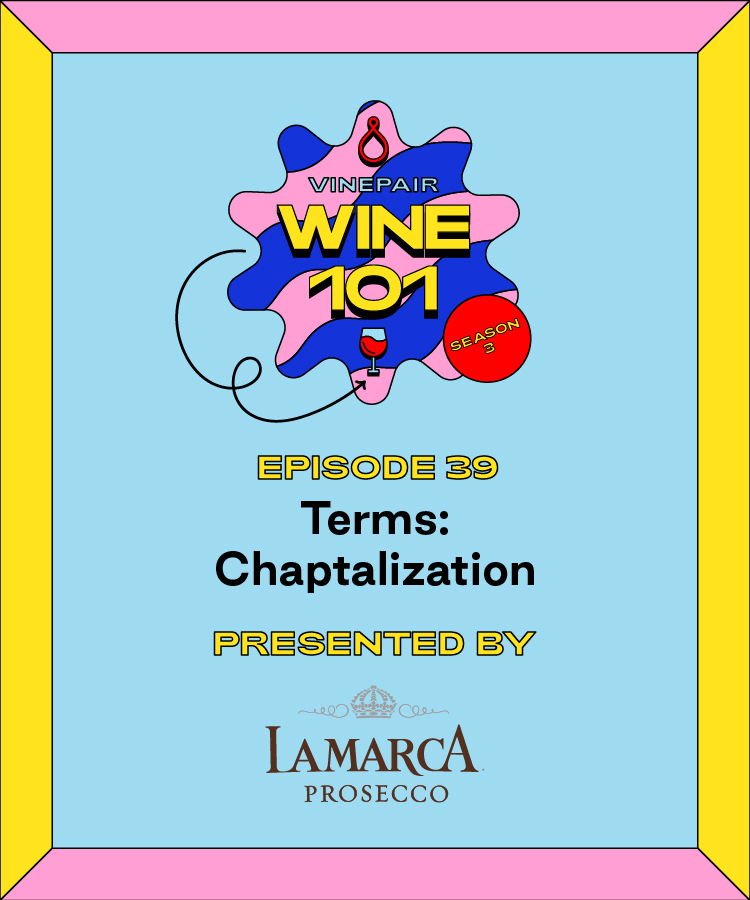
This episode of “Wine 101” is sponsored by La Marca. When you drink La Marca, you’re enjoying more than an awesome bubbly wine. You’re also tapping into the culture of the incredible people who craft it, offering a taste of authentic Italy stateside. Saluti!
In 1756, a man named Jean-Antoine Chaptal was born in southwestern France. His immediate family was poor, but a rich uncle paid for Chaptal’s education, allowing the aspiring chemist to pursue an education in wine science. There, he built upon the practice of adding sugar — preferably beet sugar — to wine must during fermentation to enhance its depth. The more sugar present in fermentation, the more fuel the yeast has to feed off, and the resulting wine will have an augmented alcohol content, translating to a bolder, sweeter flavor. This simple process became known as “chaptalization.”
Around the same time, the French Revolution was coming to a close, and the quality of French wine was suffering tremendously. The hurdle of making wine that wasn’t watery or light in color left most winemakers stumped, and many adopted chaptalization as a solution.
The practice eventually made its way to Germany in the mid-1800s, and many other nations followed suit. The E.U. stepped in to regulate chaptalization, designating three climate zones with varying restrictions on the process. For example, in zone C, which encompasses southern Italy, chaptalization is flat-out banned. In Germany, it’s permitted but only for certain grape varieties, per the county’s own set of rules around the process. It gets complicated. And in 1993, the E.U. announced that it disapproved of chaptalization, but refrained from outlawing it altogether. Consequently, the practice is not as popular as it once was, but it’s still used regularly in several U.S. wine regions like Oregon’s Willamette Valley and Long Island, N.Y. There are clearly mixed opinions regarding the practice, but the innocent goal of making quality wine has always been chaptalization’s overall intent.
On this episode of “Wine 101,” Keith dives into the history and science behind chaptalization. Is it a good thing? A bad thing? Tune in for more.
Listen Online
Follow Keith on Instagram @VinePairKeith. Rate and review this podcast wherever you get your podcasts from. It really helps get the word out there.
“Wine 101” was produced, recorded, and edited by yours truly, Keith Beavers, at the VinePair headquarters in New York City. I want to give a big old shout-out to co-founders Adam Teeter and Josh Malin for creating VinePair. Big shout-out to Danielle Grinberg, the art director of VinePair, for creating the most awesome logo for this podcast. Also, Darby Cicci for the theme song. Listen to this. And I want to thank the entire VinePair staff for helping me learn something new every day. See you next week.
E. & J. Gallo Winery is excited to sponsor this episode of VinePair’s “Wine 101.” Gallo always welcomes new friends to wine with an amazingly wide spectrum of favorites, ranging from everyday to luxury and sparkling wine. (Gallo also makes award-winning spirits, but this is a wine podcast.) Whether you are new to wine or an aficionado, Gallo welcomes you to wine. Visit TheBarrelRoom.com today to find your next favorite, where shipping is available.
